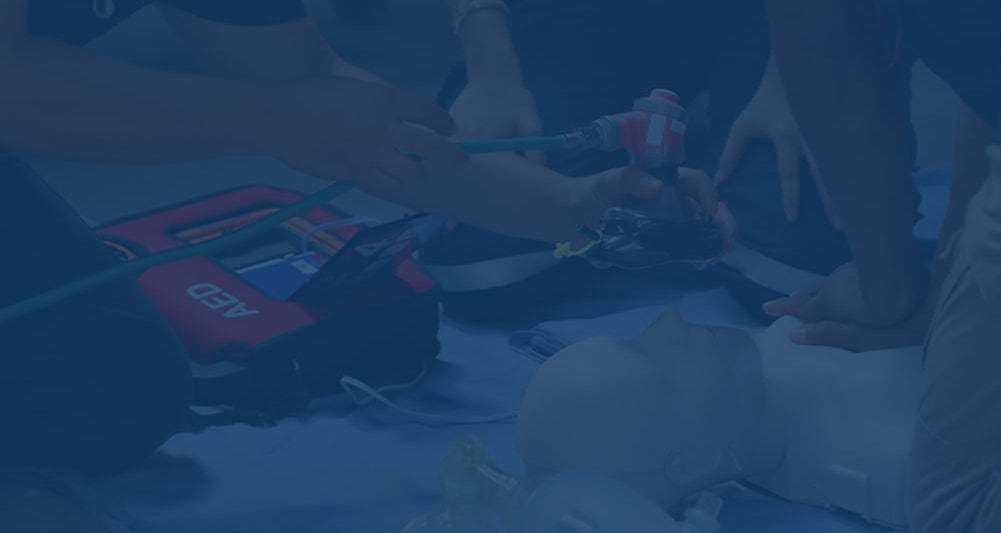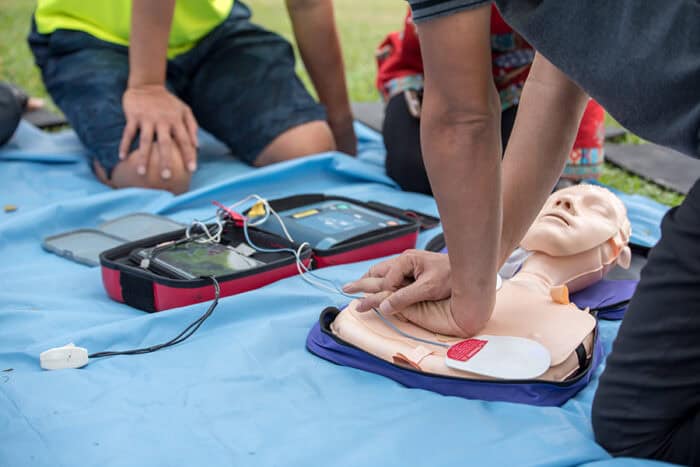California, renowned for its commitment to safety and well-being, introduced new school regulations this April regarding Automated External Defibrillators (AEDs). These regulations aim to support emergency response protocols and ensure schools manage cardiac arrest incidents effectively. Since sudden cardiac arrest is the number one cause of death among young athletes, it’s imperative to understand what constitutes a perfect AED program in the educational setting.
Understanding the New AED Regulations in California
Recognizing the critical importance of AEDs in saving lives during cardiac emergencies, California recently enacted legislation mandating the presence of AEDs in schools with interscholastic athletic programs and youth sports events. The legislation also states that these schools are responsible for maintaining and testing the AED per the manufacturer’s guidelines. Furthermore, when an AED is installed in a public or private K–12 school, existing law dictates that the principal must ensure that school administrators and staff receive annual information on sudden cardiac arrest, the school’s emergency response plan, and proper AED usage.
Under this proposed legislation of April 2024, in schools with grades 6 through 12, where an automated external defibrillator is installed, the principal must inform students annually about the whereabouts of all AED units on campus. This change has the potential to save even more young lives, though some critics believe more reform is necessary to allow more individuals to be “allowed” to utilize the AEDs to save those lives.
Critical Components of the Perfect AED School Program
A perfect school AED program encompasses several vital components to ensure readiness and efficacy in managing cardiac emergencies:
1. Accessible Placement of AEDs
One crucial key to implementing a successful school AED program is ensuring that the devices are strategically and conveniently placed throughout the campus. Accessible placement of AEDs means having them easily visible, reachable, and centrally located in areas anyone can access.
Ideal high-traffic areas for placement may include:
- Gymnasiums
- Cafeterias
- Sports fields
- Administrative offices
Placing AEDs in easily accessible cabinets or wall-mounted cases with clear signage can help improve response times during emergencies and provide quick access to potential lifesaving equipment. Placing AEDs near a phone or radio system is best for quick communication. Ideally, there should not be more than 3 minutes of fast walking distance between any campus area and a nearby AED.
Regularly assess the placement of AEDs based on changes in school facilities, activities, or layout. Conducting routine inspections and evaluations can help identify gaps or areas where additional devices may be needed to ensure full coverage across the school grounds.
2. Regular Maintenance
Routine maintenance and inspection of AEDs are essential to ensure their functionality when needed. Schools should establish protocols for regular checks, including battery life, pad expiration dates, and overall device integrity. In 2017, a young Florida schoolboy died possibly because the school’s AED electrode pads were found to be expired. Regular inspection could have prevented this tragedy.
Rescue Training Institute’s RescueManager can help you know how to properly maintain your AED. RescueManager offers comprehensive solutions to ensure that your AED program remains in compliance and operates smoothly. With features such as inspection and reminder management, AED tracking, and expiration date monitoring, RescueManager takes the guesswork out of maintaining your AEDs. Our platform also provides FDA recall alerts, ensuring that your devices are always up-to-date and safe to use. Whether you’re building a new AED program or fine-tuning an existing one, our dedicated team is here to assist you every step of the way. With RescueManager, you can have confidence in the readiness and reliability of your AEDs, knowing that they are properly managed and compliant with regulations.
3. Comprehensive CPR and AED Training
Comprehensive CPR and AED training are crucial components of a perfect school AED program. Training should be hands-on and interactive, and ongoing training and refresher courses are essential to ensure that staff members are up-to-date on the latest guidelines and best practices for using an AED and administering CPR. Rescue Training Institute offers comprehensive CPR and AED training in the Sacramento area that allows participants to practice in simulated scenarios to build confidence and competence in real-life situations.
4. Emergency Response Plan
Another crucial aspect of an effective school AED program is a well-defined emergency response plan. This plan should outline clear protocols for activating emergency services, communicating with parents and guardians, and coordinating efforts with external stakeholders such as paramedics or hospital staff. Regularly reviewing and updating this plan to address potential gaps or improvements is essential to maintaining a high level of readiness within the school community. It’s important for schools also to have designated individuals responsible for overseeing the implementation and execution of the emergency response plan to ensure seamless coordination during an emergency.
5. Integration with First Aid Kits
By incorporating AEDs into existing first aid kits, schools can create a seamless response system that addresses common injuries and sudden cardiac arrests. This integration helps streamline emergency protocols, making it easier for staff members to access and use life-saving equipment in critical situations.
6. Community Awareness
Community awareness is a crucial component of a successful school AED program. By engaging with the local community, schools can increase public knowledge about the importance of AEDs and how they can save lives in emergencies. Hosting informational sessions, distributing educational materials, and conducting demonstrations can help raise awareness and encourage more involvement from parents, students, and community members. Furthermore, involving local businesses and organizations in fundraising efforts to purchase AEDs for schools can strengthen community support for the program.
In conclusion, California schools’ new regulations for AEDs underscore the state’s dedication to safeguarding lives and promoting emergency preparedness. A perfect school AED program goes beyond mere compliance, integrating accessibility, training, maintenance, and community engagement to create a safer and more resilient educational environment. By prioritizing AED readiness, schools play a vital role in protecting the health and well-being of their communities. Rescue Training Initiative offers comprehensive and engaging CPR and AED classes or first aid classes in Folsom, CA that can help your school be prepared for sudden emergencies.



